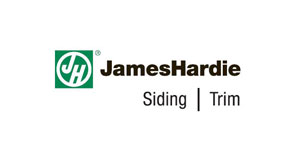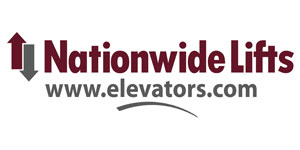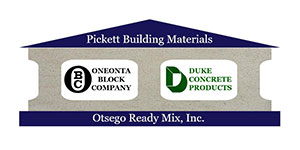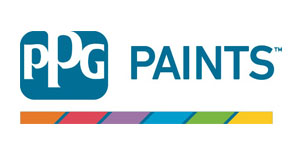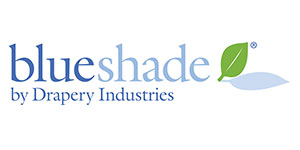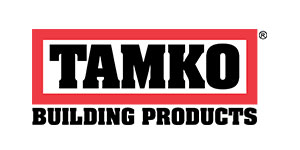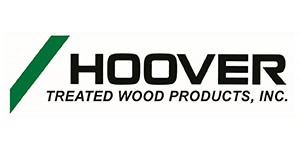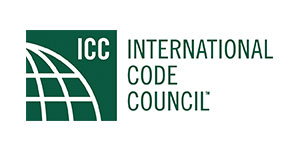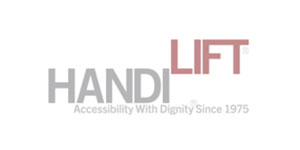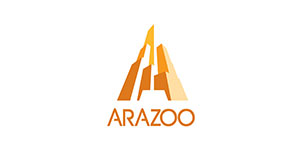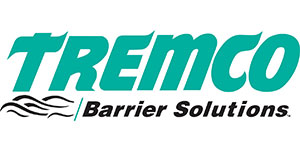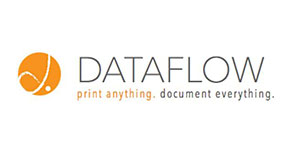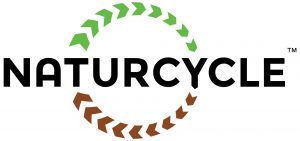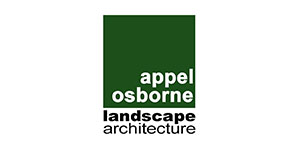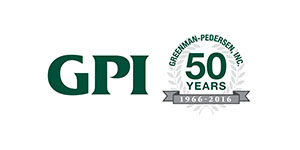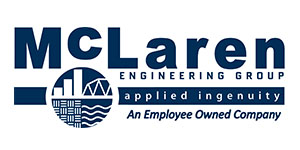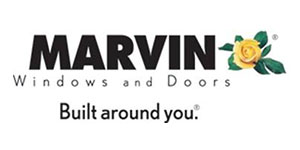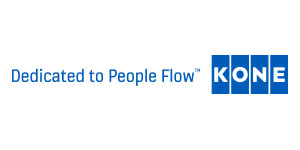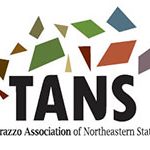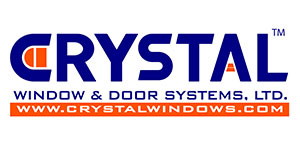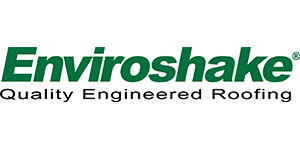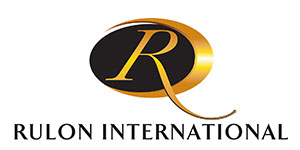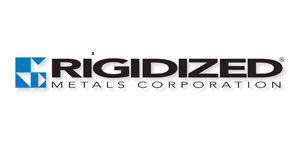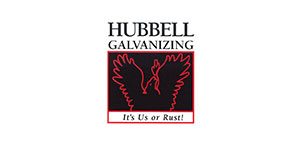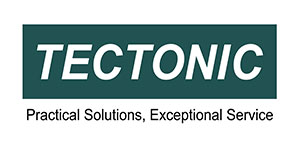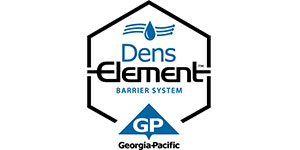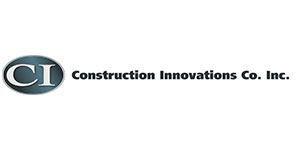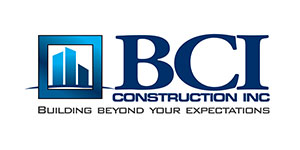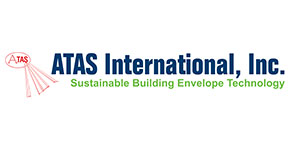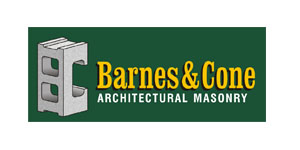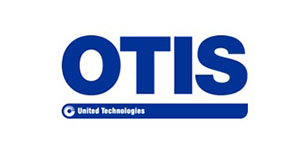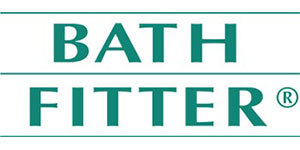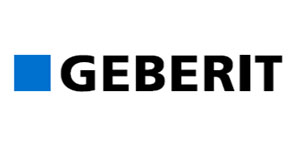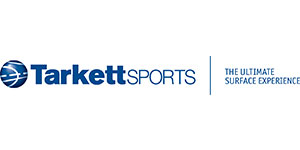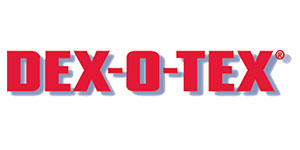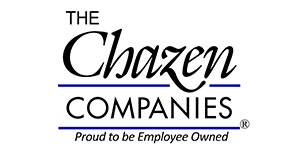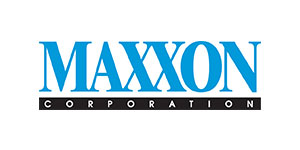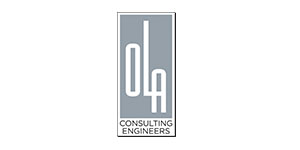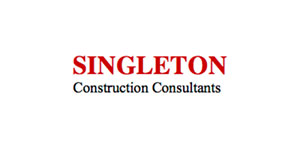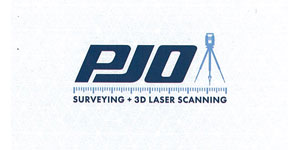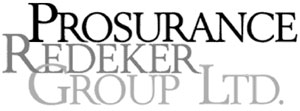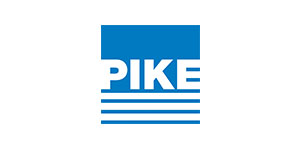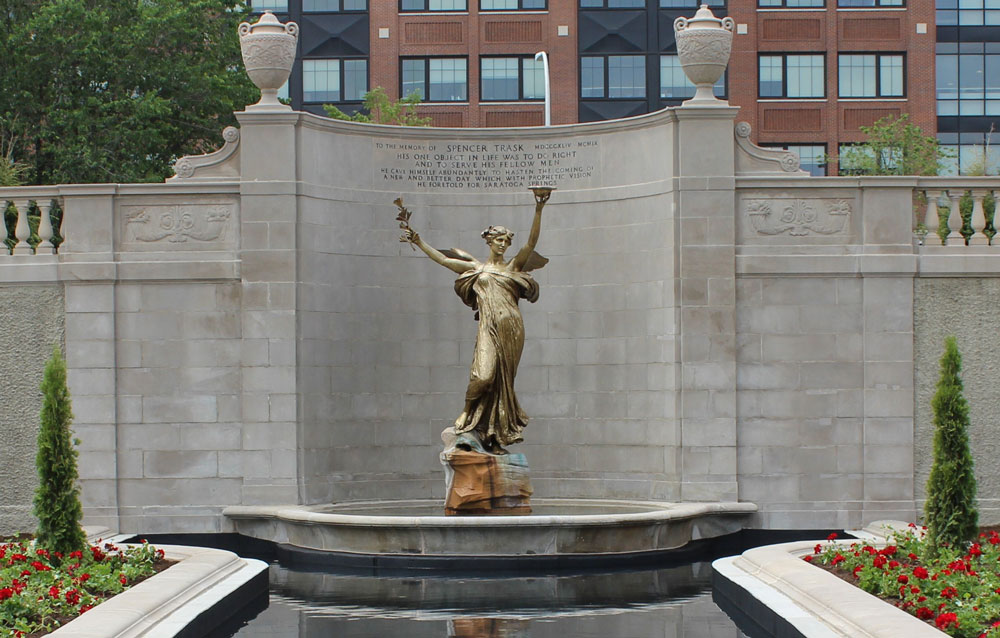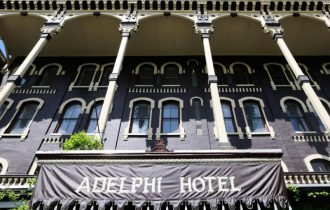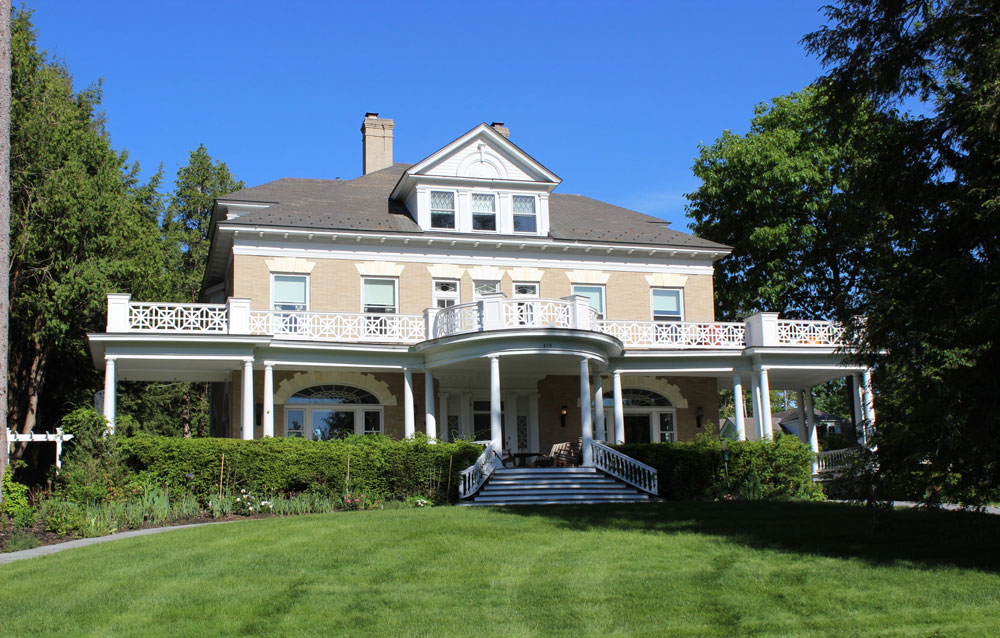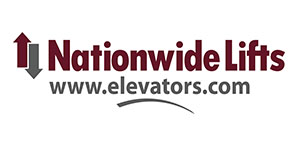Besides the opportunity to network with vendors and learn about the latest products and services to help your business thrive, the 2016 Expo will feature:
- Lunch
- Refreshment breaks
- “Wall” talks
- Teambuilding workshops
Spec Academy:
The Spec Academy is a new edition to the 2016 Design Conference. Spec Academy programs will provide you with technical information on methods and materials to enhance your projects. Come and have an early start to your conference program on Thursday, or, on Friday, have an early morning cup of coffee or top off your day with one of these informative sessions.
“Wall” talks:
20-minute moderated, informal discussions. You choose the conversation most appealing to you.
10:15 AM
Collaborative Project Delivery
How have you worked with others (non-architects) on projects?
Clients as Collaborators
How have your clients sparked your creativity?
11:00 AM
Emerging Professionals: Foresight into the Future of Architecture
What do you want to do with architecture as your career? Where do you want to see the industry go?
Collaboration with Contractors
How do architects relate to the people building their designs?
12:00 PM
The Future of Architecture
What are your fears about the profession? There has been profound transformation about how services are provided, but is this a good thing?
Designing with Other Architects
How has this worked for you in the past? Has there been tension in these relationships? Does it work better if you come packaged as a team, or if pushed together?
| SEMINARS
Preconference Seminars: In order to be enrolled you must be registered for one other full day.
WE0116
Conquering the Energy Code for Commercial Architects
Program Developed and Presented by Urban Green Council, Underwritten by the New York State Energy Research & Development Authority
10:00 AM – 6:00 PM
Registration for this program will begin at 9:00 AM
7 LU/HSW Hours
7 GBCI Hours
5 CEO Hours in Energy Conservation Construction Code
2 CEO Hours in Code Enforcement and Administration
$75.00 fee includes breaks and resource materials
Lunch is not included.
Note: If you have taken this course previously, you will not be eligible for CE credit.
Designers struggle to comply with energy code requirements due to confusion about documentation, misunderstood code language, and the challenge of keeping up to date on a code that changes every three years.
Not only are designers required to meet new energy code obligations, but learning how to comply with today’s code will prepare design firms for coming changes.
Using the upcoming IECC 2015, which will take effect October 3, 2016, as the source, Conquering the Code teaches architects to understand the structure and rationale behind the energy code. Participants will learn how to differentiate the various compliance pathways and understand the requirements for compliance.
Often, it is not a lack of knowledge that leads to failure to comply but a lack of coordination and communication among the design team, their client, the code officials and the construction team.
A fundamental theme of the course is to explain specific code provision by describing the interdependence of the building envelope, mechanical and lighting systems and their impacts on energy consumption.
Spec Academy – Elevator 101
SP0116
11:00 AM – 12:00 PM
1 LU/HSW
While elevators are an important design and planning element in most multi-story commercial, institutional and multi-unit residential projects, many architects have not had the opportunity to develop a systematic overview of basic elevator technology, design and planning. This module is developed for designers with varying levels of experience and expertise. It touches on the basics of elevator design as well as the most common design issues encountered in low, mid and high rise projects. The topics covered included:
• The history of elevators
• Common types of elevators
• Basic elevator components
• Key design and planning considerations
• New technology and trends in the elevator industry
Jeff Halpin
Otis Elevator Company
Albany, NY
Spec Academy – 3D High Definition Laser Scanning: Bringing Your Design and Construction Team Together
SP0216
11:00 AM – 12:00 PM
1 LU
3D laser scanning and point clouds are starting to make their way into the marketplace. This presentation will describe how your firm can run with these new ideas to collaborate with other professionals including Civil Engineers, Structural Engineers, Mechanical Engineers, Project Managers, and Developers. You will learn how to integrate the scan data into projects to provide new and improved deliverables for your clients. You will be able to show your clients what a finished project will look like before it is constructed. Not in the typical cartoonish fashion but in actual survey 3D data collection.
Paul James Olszewski, PLS
Paul James Olszewski, PLS, PLLC
Camillus, NY
Spec Academy – Fire-Retardant Treated Wood and the International Building Code
SP0316
11:00 AM – 12:00 PM
1 LU/HSW
The International Building Code, being adopted by New York State this year, allows the use of fire-retardant treated wood in a variety of areas of Type I and II (noncombustible) construction. In the growing Type III mid-rise construction market, it is used extensively in the exterior walls. This presentation takes an in-depth look at fire-retardant treated wood (FRTW) focusing on: FRTW characteristics, properties, performance in a fire as well as preparation, treatment, inspection and labeling. Fire tests, standards, building code requirements, the use of Forest Steward Council (FSC) wood in LEED projects and the impact on construction and insurance costs will also be discussed.
Chris Athari
Hoover Treated Wood Products
Columbus, OH
People-Centric Built Environment: A Collaboration of Architecture and Social Science
TH0216
3:00 PM – 4:30 PM
1.5 LUs/HSW
For centuries, architecture has been closely allied with the physical sciences, though other types of collaborations are necessary in order to continue broadening architecture’s ability to address societal needs. Recent interdisciplinary alliances between social science and architecture have introduced research approaches and innovative tools to the field of architecture which have the potential to transform how we understand and shape the built environment.
This session will explore the opportunities for more closely integrating the social sciences into architectural practice to advance the performance, experience, and value of the built environment.
Transforming El-Space Across New York State
TH0316
3:00 PM – 4:30 PM
1.5 LUs/HSW
Elevated infrastructure divides communities across New York State, from train lines in the Bronx to highways in Syracuse. The negative impact of this infrastructure is well documented, but less well known are nascent attempts by nonprofits and municipalities to reclaim this ‘el-space’ for the public. Creative design and extensive cooperation between design disciplines and government agencies can transform these unique urban sites into safe, attractive, and environmentally friendly connections between communities.
Join the Design Trust for Public Space, Design Trust Fellows, and the New York City Department of Transportation, for an engaging conversation on the challenges of el-space design. The session will focus on the lessons learned from Under the Elevated, a comprehensive analysis of the space beneath New York City’s elevated infrastructure, and El-Space pilots, a series of neighborhood-based tests of strategies. The rich design possibilities inherent in el-space will be discussed, along with successful multi-agency collaboration strategies and meaningful community engagement ideas. Innovative urban design, lighting, and green infrastructure solutions will also be shared.
Designing the Largest and Tallest Passive House Building in the World
TH0416
3:00 PM – 4:30 PM
1.5 LUs/HSW
Handel Architects’ residential tower for Cornell University’s new Roosevelt Island Campus will include 350 residences for students, staff and faculty. The 26-story building is part of Cornell’s 2.1 million square foot technology campus in New York City, a partnership between Cornell and Technion – Israel Institute of Technology. The building is being developed by Hudson Companies, the Related Companies, and Cornell University.
Cornell Tech Residential is being designed to Passive House standards, and when complete will be the largest and tallest building in the world built to Passive House standards. Passive House (PH) is the strict international building standard that drastically reduces energy consumption while creating a healthier and more comfortable living environment for a fraction of residents’ usual energy costs.
To achieve Passive House standards, Cornell Tech Residential will incorporate a number of sustainability-focused design elements. The façade, constructed of a prefabricated metal panel system, acts as a thermally insulated blanket wrapping the building structure. Purified fresh air will be ducted into each bedroom and living room, providing superior indoor air quality. Compared to conventional construction, the building is projected to save 882 tons of CO2 per year, equal to planting 5,300 new trees.
Crossover & Collaboration of Principles of Design
TH0516
4:45 PM – 6:15 PM
1.5 LUs/HSW
This panel discussion will include presentations from Ford Motor Company, Gensler & Grimshaw Architects, as they explore the common threads of collaboration between each of their areas of expertise, using transportation as the core subject matter. Each panelist designs for widely varying audiences, and for different infrastructures, but the end goal of the differing entities remains the same; enhancing the end user’s experience by unique design. Moreover, the panel will explore how seemingly unrelated designs can and do crossover.
Paulo Faria
Grimshaw Architects
New York, NY
Spec Academy – Accessibility, Safety and Platform Lifts and Elevators
SP0416
7:00 AM – 8:00 AM
1 LU/HSW
There is a growing importance for elevators and lifts in today’s designs. Lifts and elevators can be an extraordinary feature added to a home or building which will enhance the life quality and safety of the end user. In this program, the participant will learn about the requirements for platform lifts, the different types of lifts, and basic design. They will also gain functional knowledge of code compliance, how to solve accessibility challenges, and solutions for evacuation for persons with disabilities.
Luke Lesniowski
Handi-Lift
Carlstadt, NJ
Spec Academy – Use of Light Gage Metal Framing in Mid-Rise Construction
SP0516
7:00 AM – 8:00 AM
1 LU/HSW
More and more architects and developers are using light gage metal framing (LGMF) as the building structural system. In this one hour long course, you will learn the benefits of LGMF and how to use it in your next project. Learn the advantages of LGMF as a load bearing wall in low-rise and mid-rise buildings.
Malcolm G. McLaren, PE
McLaren Engineering Group
West Nyak, NY
Haseeb Sayed, PE
McLaren Engineering Group
West Nyack, NY
Understanding Wall-mount Concealed Tank Toilet Systems Technology, From Space and Water Savings to Hospitality ADA Requirements
SP0916
7:00 AM – 8:00 AM
1 LU/HSW
This course reviews design trends by focusing on toilet system technology and its incorporation into bathroom design. The program compares a variety of systems and discusses how each can enhance function and style within the space. The program will discuss the expanding role architects and designers play in water efficiency designs – striking a balance between sustainable needs and space saving, design flexibility. By narrowing the scope to bathroom design, attention will be given to examine the appropriate ADA design criteria as well as relevant building code requirements.
Kelley DeBetta
Geberit
Des Plaines, IL
Modern Ideas for Historic Districts – A Leadership Dialogue
FR0216
*12:45 PM – 2:15 PM & 3:30 PM – 5:00 PM
3 LUs/HSW
Note – You must be present for both sessions to receive CE credit
How can we design better for our historic districts? This is a workshop to develop ideas for using modern forms and materials in historic districts for architects, urbanists and other design professionals. This hands-on-workshop includes presentations and discussions on recent initiatives, contextual zoning and landmark rules, followed by an exercise on how new buildings in a contemporary idiom or modern styles can be compatible (or incompatible) with existing historic fabric. The group will examine the issues and findings and will debate how contemporary and modern styles are appropriate for historic districts.
The goal of the workshop is to help architects make informed decisions about new projects in historic areas, specifically focusing on contextualizing contemporary designs with older neighbors in terms of height and mass, streetline, building rhythm/pedestrian experience, materiality/detailing, façade composition, and character. Upon completion of the workshop, participants will have an understanding of principles and strategies for creating projects that are contextually relevant and yet contemporary.
Programming for the Third Space: Nimble Number Crunching for Innovation
FR0316
12:45 PM – 2:15 PM
1.5 LUs/HSW
In an environment of tight budgets and stretched capacity on college and university campuses, project goals must meet clear metrics to prove their worth. Innovative and hard-to-quantify collaboration spaces can fall by the wayside when establishing space needs and getting projects approved. Using a case study of an academic building at University of Massachusetts Amherst, this session will share new techniques for integrating “the third space” into a program of space needs to provide a more comprehensive active learning environment.
Paradigms of collaboration, curriculum development, and pedagogy have transformed dramatically in recent years largely due to rapid changes in technology and a better understanding of how students actively learn. Although there have been changes in administrative processes, campus planners and designers must be empowered to program persuasively with often traditional academic departments to create a more effective range of spaces. Research indicates that spaces for informal interaction, which are currently lacking in many learning environments, are ripe for development as spaces that can heighten collaboration from peer to peer.
Convening Design and Semiotic Talent to Build Museum Identity
FR0416
12:45 PM – 2:15 PM
1.5 LUs/HSW
“A museum is a place where one should lose one’s head.” -Renzo Piano, Hon, FAIA
To create a museum that attracts people, collaboration is needed. The identity of an institution is established and promulgated by a combination of means, including printed materials, website, logotype and architecture. Museums convey a strong visual and symbolical meaning. Secular shrines to the longevity of art and the ephemerality of fad, museums strive to educate, illuminate, evoke and invoke. Can architects, graphic designers and semioticians join together to create or animate the museums of the 22nd Century?
The speakers will discuss the opportunity to rethink cultural institutions combining the abilities of professions that produce and understand image and meaning. The talk will suggest how a team of architects, wordsmiths and graphic designers can “raise the prominence” of a museum’s identity (in the words of SAM Director, Jim Letts) and shape a place, like the Met, that “collects, studies, conserves, and presents significant works of art across all times and cultures in order to connect people to creativity, knowledge, and ideas.” Connecting people is not only the mission, but modus operandi. The speakers will also look at museums in the context of a city’s “brand.”
Architectural Automation in the Age of Neuromimetic Artificial Intelligence
FR0516
12:45 PM – 2:15 PM
1.5 LUs
This talk explores the role of robotics and other forms of computational automation in connection to artificial intelligence, machine learning and data in the built environment. We are at a tipping point where automation and artificial intelligence are becoming relevant within the design process. By exploring the ambitious beginnings, Cedric Price and the Generator project, moves to share personal experiences in Columbia University, SCI-Arc and CUNY’s robotics and digital fabrication labs; this talk attempts to address the potential of computation’s increasing applied role within the built environment.
How do we address these opportunities in our pedagogy? What is the role of computation and automation in creating novel spaces? Are there opportunities for near real-time design/construction processes? How can designers engage the fabrication process to produce novel fabrication techniques allowing us to move away from preconceived solutions? What is the role of automation in the construction and assembly on the job site? Does this allow for unprecedented solutions?
Becoming a Fellow of The American Institute of Architects
FR0616
3:30 PM – 5:00 PM
1.5 LUs
Elevation to Fellowship in the AIA is an honor bestowed on a small percentage within the Institute. Have you considered fellowship as part of your career? Ever have questions about becoming a Fellow? How about that one question on the application that you are wondering about? What exactly does the College of Fellows do to mentor interns and YAF Members? This is your chance to ask all the questions you like and do it in an informal setting.
Kelly Hayes McAlonie, FAIA
University at Buffalo, Capital Planning Group
Buffalo, NY
Maximizing Success on Integrated Projects – An Owner’s Guide
FR0716
3:30 PM – 5:00 PM
1.5 LUs
Architects now have a tool which can be used to inform owners on the best approach to project delivery, aligning the project goals with the right delivery strategies.
This program will explore The Owner’s Guide to Maximizing Success in Integrated Projects, presenting the findings from a study of over 200 capital facility projects. Rather than focusing on the delivery method by considering how organizational structure, contract payment terms and team assembly process, an overall project delivery strategy should be considered when structuring design and construction services and how various strategies can work together. The most effective strategies align the core project team— owner, designers, primary builder and key specialty trades—are more effective in meeting cost, schedule and quality goals.
Three factors emerged for enabling alignment within the core project team: early involvement, qualification driven selection and cost transparency in contracts. Successful project delivery lies in designing a strategy aligning the core project team with the owner’s targeted goals.
The guide presents information to support a project delivery workshop with key project stakeholders.
Reskinning Upstate’s Computer Warehouse Building
FR0816
3:30 PM – 5:00 PM
1.5 LUs/HSW
The Upstate Medical University’s 1970’s SUNY-brutalistic style Computer Warehouse Building was literally falling apart, due to weather and limitations of the original construction. As with similar period buildings it was also thermally inefficient. Traditional repair methods were considered, but expensive, without functional, thermal or aesthetic benefit.
Reskinning was the solution. Reskinning is the replacement of a building’s exterior facade or cladding, including upgrades to the thermal envelope. This presentation explores the reskinning process, including design process, energy performance, indoor thermal comfort, aesthetics and addressing functional problems with the building exterior.
The design team of engineers and architects will share their methodology of the assessment of the building envelope. This includes: appearance; physical stability and durability issues; as well as infrared investigations of the heat loss and uninsulated areas of the articulated facade. They will review the system selection process, including cladding materials, rainwater management options, insulation choices, and incorporation of air barrier systems. Renderings of the chosen system – metal panels and brick over rock wool insulation – will be shown, as well as photos of the completed project.
Michael Naylor, AIA
Envision Architects
Albany, NY
Julia M. Zimmer
Klepper, Hahn & Hyatt
East Syracuse, NY
Spec Academy – Understanding Residential Elevators
SP0616
5:15 PM – 6:15 PM
1 LU/HSW
Driven by an aging population, the need for residential elevators continues to grow. Families want to stay in their homes longer, and home elevators are instrumental in achieving their goals. This program provides comprehensive learning on what type of elevator to use in residential project, the codes effecting usage, as well as, the safety considerations and proper planning to avoid common construction mistakes.
Andy Darnley
Nationwide Lifts
Syracuse, NY
Spec Academy – Build a Better House at Lower Cost by Controlling Infiltration
SP0716
5:15 PM – 6:15 PM
1 LU/HSW
This presentation discusses the impact of reduced air infiltration on energy use and the moisture dynamics that determine whether or not the house is “too tight”. Specific examples of how lowering air infiltration compares to other alternatives for lowering energy use are given, including increased insulation values and reduced window U-values. The basic science controlling moisture dynamics in frame construction is presented to give the audience an understanding of what governs the speed and direction of moisture diffusion, how the amount of moisture movement via diffusion compares to the amount of moisture moving via air infiltration, and the role of sorption/desorption of framing materials in determining the moisture tolerance of the wall structure. Specific examples are given to aid understanding.
Ken Lynch
Tremco Barrier Solutions
Walpole, MA
Spec Academy – The Design & Performance Advantages of Composite Shake, Shingle, and Slate
SP0816
5:15 PM – 6:15 PM
1 LU/HSW
This course provides an overview of the characteristics and green features of composite shake, shingle and slate vs. alternative shake and slate options as well as a discussion of the relationship of composite shake, shingle, and slate to various green certification programs.
Loren Bosazzi
Enviroshake
Chatham, ON
Rise & Shine Breakfast & Presentation
SA0116
8:30 AM – 10:00 AM
Moderated by AIANYS President Margaret O’Donoghue Castillo, FAIA, the panel presentation will explore the unique relationships formed between architects and the public officials who are responsible for charting a successful, vibrant community plan. The discussion will be from the perspective of those who have been active in the development of a large scale, cohesive and inclusive collaborative community planning processes.
Funding, public input and designing for the future are all inherently dividing factors when master-planning any area, from urban to suburban, where the overlapping dependency on each member of the team is critically important in delivering a successful project to the residing constituents.
Chris Hawley
City Planner, City of Buffalo
Buffalo, NY
Alan Greenberger, FAIA
Former Philadelphia Deputy Mayor
Philadelphia, NY
Monica Kurzejeski
Deputy Mayor, City of Troy
Troy, NY
Margaret O’Donoghue Castillo, FAIA – Moderator
AIANYS President
PREPARE Structural Systems Problem Solving Course for the A.R.E.
SA0216
10:15 AM – 4:30 PM
6 LUs/HSW
$80 fee includes breaks and materials
Course is open to any ARE candidates
Prepare candidates for the Architect Registration Exam (A.R.E.) Structural Systems Exam (4.0) and / or those related sections for the A.R.E. 5.0 by using the instructor’s professional experience and education in architecture and structural engineering
The Structural Systems Short Course will cover the following:
- A brief overview of the A.R.E. 4.0 to 5.0 as it relates to Structural Systems
- Review of the NCARB tested competency areas over which ARE candidates will be evaluated.
- Problem solving with the instructor. The attendants will learn how to categorize the problem, identify what is being asked to solve, start the problem, identify why incorrect answers are incorrect and why correct answers are correct.
Sunnyside Gardens: Theory, Preservation and Practice in a Historic District
SA0316
10:15 AM – 11:45 AM
1.5 LUs/HSW
Sunnyside Gardens is one of the most admired, and most studied, planned communities in the United States. Inspired by the English Garden City movement, Sunnyside featured thoughtfully designed open space, generous plantings, and low scale streetscapes of modest brick homes within the grid of Queens.
The community is a unique historic example of a collaborative effort of design disciplines. Led by architects and town planners Clarence Stein and Henry Wright with blocks of houses by architect Frederick L. Ackerman and the landscape by Marjorie Cautley, it was built between 1924 and 1928.
This program will explore, first, the theories which inspired the designers (a historic collaboration of urban planning, architecture and landscape architecture), second, how the enclave was protected and regulated over the decades, and third, how the properties and open spaces have been adapted and restored. Respecting the historic plan while inserting a modern program yields a case study of preservation as sustainability. Have the social ideals embodied in the original collaborative plan been replaced by the collective desire to preserve the scale and charm? Design involving history and precedent has become the means to preserve and maintain a sense of community in this historic collaborative effort.
Building Enclosure Commissioning BECx and ASTM E2813-12
SA0416
10:15 AM – 11:45 AM
1.5 LUs
ASTM E2813-12 “Standard Practice for Building Enclosure Commissioning” (BECx) was released in 2012. Although referenced in Standards and Owner’s programmatic requirements, the applied aspects, goals and benefits of building enclosure commissioning are sometimes unknown, if not misunderstood. This presentation will outline the intent of BECx as intended by ASTM E2813-12 and its process from project inception through occupancy.
The Challenge of Facilities Management for Cultural Institutions
SA0516
10:15 AM – 11:45 AM
1.5 LUs/HSW
Not-for-profit cultural institutions and organizations – including museums, galleries, and foundations – are often housed in historic buildings that have ongoing, expensive maintenance and repair needs. With limited funds for capital improvements, “deferred maintenance” becomes a serious problem leading to costly repairs taking funding away from an institution’s core mission. Many of these institutions have few maintenance staff and limited experience in working with design professionals.
This presentation will profile The Buffalo History Museum as an example of the challenges faced by cultural institutions in managing and optimizing their facilities. The Museum first retained Thinking Outside the Square (TOTS) to develop a visitor experience plan that quickly morphed into a full facilities assessment and space utilization study. Led by a partnership between TOTS and Design Synergies Architecture, the project integrates the expertise of a diverse design team to address the complex needs of a 21st century museum housed in three century-old buildings. It demonstrates the importance of developing a collaborative client partnership, and offers advice on dealing with challenges of fundraising, working with Boards and Committees, and balancing mission-related functions with the demands of aging bricks-and-mortar facilities.
Design Strategies for Renewing and Expanding Historic Libraries
SA0616
10:15 AM – 1:30 PM
3 LUs/HSW
Communities across New York State are grappling with how to transform their historic library buildings. Whether through renovation alone or renovation and expansion; these building have proven potential for expansion and renewal to serve today’s dynamic and technologically-rich library service goals. The “one-size-fits-all” nature of the quiet environment that typified public libraries of the past has given way to the library as a transformative center of activity and learning in the local community. The seminar will explore successful strategies for community involvement in the essential planning and renewal of historic library buildings. Interactive public planning and skillful design strategies will be shared in a seminar including a presentation and interactive discussion.
| GENERAL SESSIONS
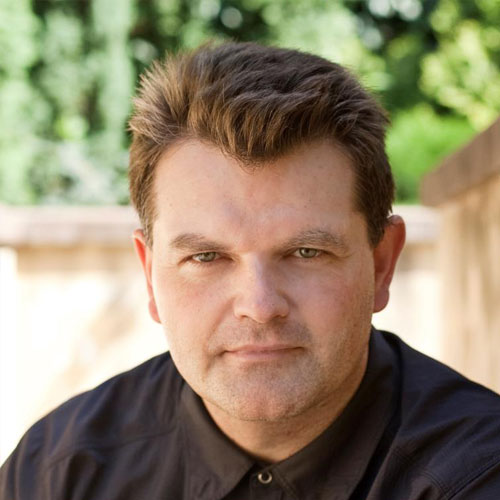
Opening General Session – Kai-Uwe Bergmann, AIA, Bjarke Ingels Group
Thursday, September 29, 2016
1:15 PM – 2:45 PM
1 LU/HSW
The opening General Session to the 2016 Design Conference brings to the forefront what this year’s Conference is all about: the benefits and applications of collaboration and how both elements are essential to solving problems and achieving true innovation. Mr. Bergmann’s presentation demonstrates the philosophy behind good collaboration into practice for revolutionary design.
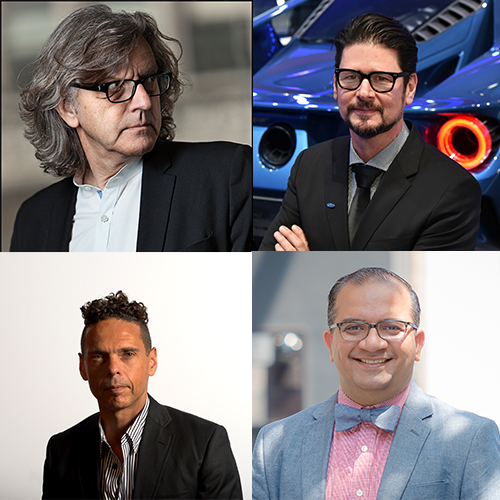
Crossover & Collaboration of Principles of Design
Thursday,September 29, 2016
4:45 PM – 6:15 PM
1.5 LUs/HSW
The panel discussion will interactively explore collaborative design principles from various industry professionals. Designers from Ford Motor Company, Gensler and Grimshaw Architects, will discuss the commonalities of their areas of expertise, using transportation as the core subject matter. Each panelist designs specialty applications for varying consumer groups, with the collective goal of enhancing the end user’s experience by unique design.
Moreover, the panel will explore how the seemingly unrelated designs do in fact interrelate. The moderator will pose a variety of questions to demonstrate how design encompasses many matters within their respected industries and specialties, allowing each panelist to discuss their own unique challenges within their specific designs.
Participants will be given the opportunity to interact with the moderator and panelists with their own design challenges, and learn from their peers how a seemingly unrelated project can help to enhance their own projects.
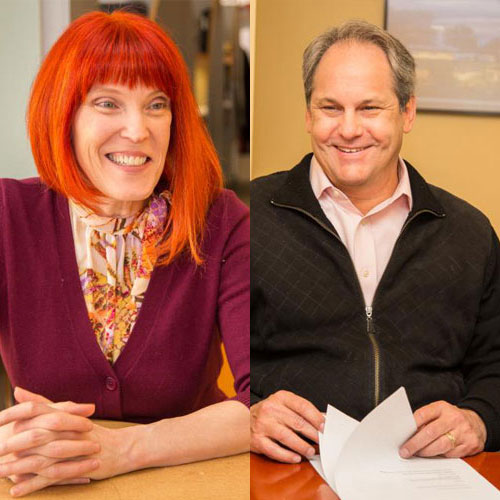
Making Meaningful Architecture: Community Engagement in Sandy Hook and Beyond
Friday, September 30, 2016
8:15 AM – 9:45 AM
1 LU/HSW
As an environment for learning and collective activities of all kinds, schools provide an essential resource to communities. Building a school which emerges from a specific context and spirit, the project team must engage the community directly, tapping into the most vital resource for designing meaningful architecture: the creative potential of the community. This challenge is especially fraught following violent trauma, as obstacles to constructive engagement arise such as suspicion and dread. Our interactive session draws upon our firm’s experience designing the new Sandy Hook School and reveals new aspects of the evolving role of the architect.
Participants will engage in an active workshop process – similar to that employed in Newtown – leaving behind all preconceptions. Attendees will learn a basic method for engaging others in attentive listening. This is crucial to making meaningful architecture, and can also serve to help a community reconnect with themselves, and continue to heal.
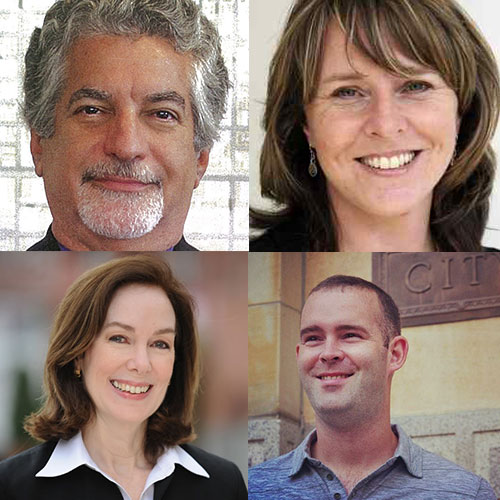
The Rise & Shine Breakfast & Presentation
Saturday October 1
8:30-10:00
1.5 LU/HSW
Moderated by AIANYS President Margaret O’Donoghue Castillo, FAIA, the panel presentation will explore the unique relationships formed between architects and the public officials who are responsible for charting a successful, vibrant community plan. The discussion will be from the perspective of those who have been active in the development of a large scale, cohesive and inclusive collaborative community planning processes.
Funding, public input and designing for the future are all inherently dividing factors when master-planning any area, from urban to suburban, where the overlapping dependency on each member of the team is critically important in delivering a successful project to the residing constituents.
| TOURS
Photo Credit: Saratoga Springs Preservation Foundation
Historic Structures Within Congress Park
TR0116
Friday, September 30
12:30 PM -2:30 PM (30 minutes for travel time)
Transportation included.
1.5 LU’s/HSW
$35 fee includes transportation.
This tour will take a look at how Congress Park, a National Historic Landmark, has evolved over time. In 1826, John Clarke, a New York City entrepreneur who was the first to bottle Saratoga’s water, purchased Congress Spring and over time acquired land surrounding the spring to create Congress Park as a place for visitors to promenade after sampling the mineral waters. In 1870, John Morrissey, former heavy weight and New York State senator, built an Italianate Club House at the center of the park to host gambling. Richard Albert Canfield purchased the Saratoga Club House and invested an estimated $800,000 in enhancing the building and the grounds of Congress Park to bring them up to the standards of the top European establishments. Over the years other improvements were made to the park including the addition of the Italian Garden, War Memorial, Carousel, and the Spirit of Life & Spencer Trask Memorial. The tour will provide a general overview of the park’s development and focus on the recent award-winning restoration of Spirit of Life & Spencer Trask Memorial, a joint project of the City of Saratoga Springs and City of Saratoga Springs, and the restoration efforts of the Canfield Casino.
Martha Lyon
Martha Lyon Landscape Architecture, LLC
Northhampton, MA
Jack Healy, P.E.
Ryan, Biggs, Clark, Davis Engineering & Surveying, P.C.
Clifton Park, NY
M. Jeffrey Baker
Mesick Cohen Wilson Baker Architects
Albany, NY
Photo credit Mike Groll
The Adelphi Hotel: One Year Later
TR0016
Friday, September 30
3:30 PM – 5:00 PM
1.5 LUs/HSW
$30 fee
Back by popular demand, the unique and historic tour of the crown jewel of Saratoga, the Adelphi Hotel renovation project. Nearing completion, this tour looks at the updated plan and progress made for the nearly $40 million renovation and preservation process.
The Adelphi Hotel is a rare surviving High Victorian Hotel Inn from the end of the 19th century—when Saratoga Springs reigned as America’s “Queen of the Spa’s.” Constructed in 1877, the distinguishing Italianate Façade rises four stories above street level with slender columns that are capped with a fantasy of Victorian fretwork. After its purchase in 2012, its new owner closed the hotel to begin work on an ambitious renovation, overhaul and preservation effort.
The Adelphi hotel is being renovated by BCI Construction in concert with Dominick Ranieri Architect P.C. and is scheduled to reopen to the public for the summer 2017 season. A portion of the project is being financed through federal and state historic tax credits.
Brian Murray
RBC Construction
Saratoga Springs, NY
Photo Credit: Saratoga Springs Preservation Foundation
Walking Tour of Historic North Broadway, Saratoga Springs
TR0216
Friday, September 30
3:30 PM – 5:00 PM
1.5 LUs/HSW
$35 fee
This tour takes a unique look at the history of Saratoga’s elite. The tour will highlight the grand Queen Annes along North Broadway, featuring homes built by Saratoga’s most prominent figures, such as Lucy Skidmore Scribner, George B. Cluett, Williams B. Gage, and Senator Brackett. Two of Saratoga’s best-known resident developers, Henry Watson and Gideon Putnam, originally laid out Broadway during the early 1800s. By 1854, North Broadway played host to many of the first full time residents in town. Saratoga continued to grow through the late 19th century. After a period of decline, when many of the properties were divided and houses were converted into apartments, separating homes from carriage house, the area was saved through private re-investment. North Broadway still captures the gilded age of Saratoga Springs through the variety of architectural styles including, Queen Anna, Italianate, Shingle style, Colonial Revival, and Romanesque Revival. This tour has been adapted for architects and will highlight key historic preservation attributes.
| EVENTS
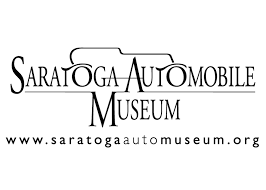
Opening Night Party
at the
Saratoga Automobile Museum
September 29, 2016
Shuttle will depart from the Saratoga Hilton at 6:45 pm.
Start your 2016 Design Conference off at the Opening Night Party, at the Saratoga Automobile Museum, by meeting new colleagues, and seeing old friends. Enjoy food, fun, cocktails and CARS! Explore the exhibits in this totally restored and renovated Saratoga Bottling Plant, a beautiful neo-classic structure built in 1934.
The exhibit on display may be a name familiar to you – Sam Posey. An architect turned race car driver turned broadcaster will have his collection on display, entitled “Posey: Shifting through the creative life of Sam Posey.”
The party will be held from 7:00 PM – 9:00 PM, and shuttle service will be provided from the Saratoga Hilton. Tickets are included with your full conference registration, or can be purchased a la carte. However you get your ticket, you’ll want to make sure you have one!
.
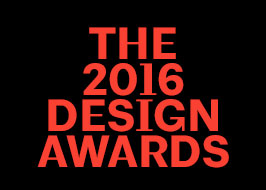
AIA New York State
Design Awards
Join us for the 2016 Design Awards event, celebrating the best New York architects have to offer. These are the projects which move and invoke, striking our senses, creating the awe-inspiring architecture AIA New York State members are known for on a worldwide stage.
The all-inclusive event will be held on Friday, September 30th at 7:00 pm in the Saratoga Hilton Ballroom.
(Note: this is a black tie preferred event)
Sponsored
by
Rise & Shine Breakfast and Presentation
October 1, 2016
7:00 AM – 10:00 AM
Start your final day of the 2016 Design Conference with breakfast, followed by a collaborative panel presentation moderated by AIANYS President Margaret O’Donoghue Castillo, FAIA.
The panel presentation will explore the unique relationships formed between architects and the public officials who are responsible for charting a successful, vibrant community plan. The discussion will be from the perspective of those who have been active in the development of a large scale, cohesive and inclusive collaborative community planning processes.
Funding, public input and designing for the future are all inherently dividing factors when master-planning any area, from urban to suburban, where the overlapping dependency on each member of the team is critically important in delivering a successful project to the residing constituents.
The panelists include Chris Hawley, City Planner of Buffalo, former Deputy Mayor of Philadelphia, Alan Greenberger, FAIA and Deputy Mayor of the City of Troy, Monica Kurzejeski.
Breakfast is included with your full registration. Single day and Keynotes & Seminars only registrants include only the presentation, which will begin at 8:30 AM. Breakfast can be added to your registration for $30.
| SCHEDULE
AIA New York State third annual Design Conference will focus on how design excellence can not only be a catalyst to creative solutions within our own profession but also innovation for other parallel design disciplines.
The opportunity to use design as a means for achieving progressive solutions whether they be in architecture, industrial design, graphic design, branding, furniture and the fashion industry, speaks to the idea that good design, regardless of its discipline, influences and impacts one’s environment. Collaboration among other architects, or design professionals in the various other disciplines is a key component in architecture.
Wednesday
September 28, 2016
9:00 am – Registration Open for Conquering the Energy Code only
10:00 am – 6:00 pm – Conquering the Energy Code for Commercial Architects & Engineers
Thursday
September 29, 2016
9:00 am – 6:00 pm – Registration Open
11:00 am – 12:00 pm – Spec Academy
1:00 pm – 2:30 pm – General Session – Kai-Uwe Bergmann, AIA
2:45 pm – 4:15 pm – Continuing Education/Tours
4:30 pm – 6:00 pm – General Session: Collaboration & Crossover of Design Principles
7:00 pm – 9:00 pm – Opening Night Party – Saratoga Auto Museum
Friday
September 30, 2016
6:30 am – 6:00 pm – Registration Open
7:00 am – 8:00 am – Spec Academy
8:15 am – 9:45 am – General Session – Julia McFadden, AIA & Jay Brotman, AIA Making Meaningful Architecture: Community Engagement in Sandy Hook and Beyond
9:00 am – 3:15 pm – AIANYS Expo 2016: Saratoga City Center
12:45 pm – 2:15 pm – Continuing Education/Tours
3:30 pm – 5:00 pm – Continuing Education/Tours
5:00 pm – 6:00 pm – Spec Academy
7:00 PM – 2016 AIANYS Design Awards Event
Saturday
October 1, 2016
7:00 am – 10:00 pm – Registration
7:00 am – 10:00 am – Rise & Shine Breakfast & Presentation
10:15am – 1:45 am – Continuing Education/Tours
10:15 am – 4:30 pm – PREPARE Structural Systems Problem Solving Course for the A.R.E.
| REGISTRATION
Full Registration
| Early Bird | After September 2nd | |||
| AIANYS Member: | $385 | AIANYS Member: | $450 | |
| AIANYS Assoc. Member: | $250 | AIANYS Assoc. Member: | $265 | |
| Non Member: | $585 | Non-Member: | $650 | |
Includes:
Thursday, September 29, 2016
Spec Academy Programs* – Choice of 3
Continuing Education Seminars – Choice of 4
Opening General Session – Kai-Uwe Bergmann, AIA, BIG (Bjarke Ingels Group)
Afternoon General Session – Crossover & Collaboration of Principles of Design
Opening Night Party at Saratoga Automobile Museum
Refreshment break
Friday, September 30, 2016
Spec Academy Education Programs – Choice of 3
Continuing Education Seminars – Choice of 7
Morning General Session on Friday – Making Meaningful Architecture: Community Engagement in Sandy Hook and Beyond- Julia McFadden, AIA & Jay Brotman, AIA – Svigals + Partners
2016 Expo, showcasing materials & services to enhance your projects and business operations
Lunch in Expo
Refreshment breaks
Saturday, October 1, 2016
Continuing Education Seminars- Choice of 4
Rise and Shine Breakfast & Presentation
(Does not include Design Awards Reception & Dinner)
*The Spec Academy is a new edition to the 2016 Design Conference. Spec Academy programs will provide you with technical information on methods and materials to enhance your projects. Come and have an early start to your conference program on Thursday, or, on Friday, have an early morning cup of coffee or top off your day with one of these informative sessions.
Unlicensed Guest
| Early Bird | After September 2nd | |||
| Unlicensed Guest: | $250 | Unlicensed Guest: | $315 |
Unlicensed guest package must accompany a full registration
Includes:
Thursday, September 29, 2016
Opening General Session – Kai-Uwe Bergmann, AIA, BIG (Bjarke Ingels Group)
Afternoon General Session – Crossover & Collaboration of Principles of Design
Opening Night Party at Saratoga Automobile Museum
Refreshment break
Friday, September 30, 2016
Morning General Session on Friday – Making Meaningful Architecture: Community
Engagement in Sandy Hook and Beyond- Julia McFadden, AIA & Jay Brotman, AIA – Svigals + Partners
Lunch in Expo
Refreshment breaks
Saturday, October 1, 2016
Rise and Shine Breakfast & Presentation
(Does not include Design Awards Reception & Dinner)
Keynotes & Seminars Only
| Early Bird | After September 2nd | |||
| AIANYS Member: | $325 | AIANYS Member: | $390 | |
| AIANYS Assoc. Member: | $180 | AIANYS Assoc. Member: | $195 | |
| Non-Member: | $425 | Non-Member: | $490 |
Includes:
Thursday, September 29, 2016
Spec Academy Programs* – Choice of 3
Continuing Education Seminars – Choice of 4
Opening General Session – Kai-Uwe Bergmann, AIA, BIG (Bjarke Ingels Group)
Afternoon General Session – Crossover & Collaboration of Principles of Design
Refreshment break
Friday, September 30, 2016
Spec Academy Programs – Choice of 3
Continuing Education Seminars – Choice of 7
Morning General Session on Friday – Making Meaningful Architecture: Community Engagement in Sandy Hook and Beyond– Julia McFadden, AIA & Jay Brotman, AIA – Svigals + Partners
2016 Expo, showcasing materials & services to enhance your projects and business operations
Lunch in Expo
Refreshment breaks
Saturday, October 1, 2016
Continuing Education Seminars – Choice of 4
Rise and Shine Presentation
(Does not include Opening Night Party, Design Awards Reception & Dinner or Saturday morning breakfast – breakfast can be included for an additional $30)
*The Spec Academy is a new edition to the 2016 Design Conference. Spec Academy programs will provide you with technical information on methods and materials to enhance your projects. Come and have an early start to your conference program on Thursday, or, on Friday, have an early morning cup of coffee or top off your day with one of these informative sessions.
Single Day Registrations
Thursday Registration
| Early Bird | After September 2nd | |||
| AIANYS Member: | $110 | AIANYS Member: | $160 | |
| AIANYS Assoc. Member: | $50 | AIANYS Assoc. Member: | $65 | |
| Non-Member: | $210 | Non-Member: | $260 |
Includes:
Spec Academy Programs* – Choice of 3
Continuing Education Seminars – Choice of 4
Opening General Session – Kai-Uwe Bergmann, AIA, BIG (Bjarke Ingels Group)
Afternoon General Session – Crossover & Collaboration of Principles of Design
Refreshment break
(Does not include Opening Night Party)
*The Spec Academy is a new edition to the 2016 Design Conference. Spec Academy programs will provide you with technical information on methods and materials to enhance your projects. Come and have an early start to your conference program on Thursday, or, on Friday, have an early morning cup of coffee or top off your day with one of these informative sessions.
Friday Registration
| Early Bird | After September 2nd | |||
| AIANYS Member: | $165 | AIANYS Member: | $215 | |
| AIANYS Assoc. Member: | $95 | AIANYS Assoc. Member: | $110 | |
| Non-Member: | $265 | Non-Member: | $330 |
Includes:
Spec Academy Programs* – Choice of 3
Continuing Education Seminars – Choice of 7
Morning General Session on Friday – Making Meaningful Architecture: Community Engagement in Sandy Hook and Beyond- Julia McFadden, AIA & Jay Brotman, AIA – Svigals + Partners
2016 Expo, showcasing materials & services to enhance your projects and business operations
Lunch in Expo
Refreshment breaks
(Does not include Design Awards Reception & Dinner)
*The Spec Academy is a new edition to the 2016 Design Conference. Spec Academy programs will provide you with technical information on methods and materials to enhance your projects. Come and have an early start to your conference program on Thursday, or, on Friday, have an early morning cup of coffee or top off your day with one of these informative sessions.
Saturday Registration
| Early Bird | After September 2nd | |||
| AIANYS Member: | $110 | AIANYS Member: | $160 | |
| AIANYS Assoc. Member: | $80 | AIANYS Assoc. Member: | $80 | |
| Non-Member: | $210 | Non-Member: | $260 |
Includes:
Continuing Education Seminars – Choice of 4
Rise and Shine Presentation
(Does not include Breakfast)
Architectural Students
Student Full Registration
No early bird
| Full Registration: | $85 |
Includes:
Thursday, September 29, 2016
Spec Academy Programs* – Choice of 3
Continuing Education Seminars – Choice of 4
Opening General Session – Kai-Uwe Bergmann, AIA, BIG (Bjarke Ingels Group)
Afternoon General Session – Crossover & Collaboration of Principles of Design
Refreshment break
Friday, September 30, 2016
Spec Academy Programs – Choice of 3
Continuing Education Seminars – Choice of 7
Morning General Session on Friday – Making Meaningful Architecture: Community Engagement in
Sandy Hook and Beyond– Julia McFadden, AIA & Jay Brotman, AIA – Svigals + Partners
2016 Expo, showcasing materials & services to enhance your projects and business operations
Lunch in Expo
Refreshment breaks
Saturday, October 1
Continuing Education Seminars – Choice of 4
Rise and Shine Breakfast & Presentation
(Does not include Opening Night Party or Design Awards Reception & Dinner)
*The Spec Academy is a new edition to the 2016 Design Conference. Spec Academy programs will provide you with technical information on methods and materials to enhance your projects. Come and have an early start to your conference program on Thursday, or, on Friday, have an early morning cup of coffee or top off your day with one of these informative sessions
A La Carte Special Programs & Events
Pre-Conference Seminar: Conquering the Energy Code for Commercial Architects & Engineers
Must be registered for full or one day fees to register
Includes breaks & materials, lunch will be on your own
Wednesday, September 28th
10:00 AM – 6:00 PM
| AIANYS Member: | $75 |
| AIANYS Assoc. Member: | $75 |
| Non-Member: | $75 |
PREPARE Structural Systems Problem Solving Course for the A.R.E.
Open to ARE candidates only
Saturday, October 1st
10:15 AM – 4:30 PM
| AIANYS Assoc. Member: | $80 |
| Non-Member | $80 |
Opening Night Party
Saratoga Automobile Museum
Thursday September 29, 2016, 7:00 pm – 9:00 pm
In order to purchase a ticket, you must be registered using one of the registration options.
| Early Bird | After September 2nd | |||
| AIANYS Member: | $85 | AIANYS Member: | $85 | |
| AIANYS Assoc. Member: | $85 | AIANYS Assoc. Member: | $85 | |
| Non-Member: | $85 | Non-Member: | $85 |
Design Awards Reception & Dinner
Saratoga Hilton
Friday, September 30, 2016 7:00 pm
You do not need to be registered for the Design Conference to purchase tickets to this event.
| Early Bird | After September 2nd | |||
| AIANYS Member: | $95 | AIANYS Member: | $120 | |
| AIANYS Assoc. Member: | $95 | AIANYS Assoc. Member: | $120 | |
| Non-Member: | $95 | Non-Member: | $120 |
Saturday Morning Breakfast
Saratoga Hilton
7:00 AM
This is already included in your full registration, unlicensed guest registration and architectural student registration.
In order to purchase a ticket, you must be registered using one of the registration options.
| Early Bird | After September 2nd | |||
| AIANYS Member: | $30 | AIANYS Member: | $30 | |
| AIANYS Assoc. Member: | $30 | AIANYS Assoc. Member: | $30 | |
| Non-member | $30 | Non-Member | $30 |
Bring a Non-AIA Member and Receive $100 discount off of both registrations
To take advantage of this opportunity and receive a $100 discount from your Full Design Conference Registration, register along with a non-member who also purchases a full registration. The non-member will also receive a $100 discount. Both applications must be e-mailed, faxed or mailed together with payment directly to AIANYS to be eligible for this special rate.
Please note: Any member or non-member who receive the $100 discount will be charged $100 if either of the two registered persons cancels their registration prior to the Design Conference.
For more information contact AIANYS at 518/449-3334 or email Michele Brown at mbrown@aianys.org.
Early bird Registration ends September 2, 2016
Registrations rates will increase by $65 after this date, with the exception of Associates, which will increase by $15.
All persons attending any function of the 2016 AIANYS Design Conference or staying at the Saratoga Hilton must also be registered for the Conference using the AIANYS Registration form. No exceptions.
Register Online:
By registering online through the AIANYS website, you will receive instance confirmation on the programs and tours selected
Please be sure to put your correct e-mail address in when registering, as your schedule and confirmation will only be sent to your e-mail
Please carefully review your personal information as this will appear on your name badge
You can modify your registration any time online until September 22, 2016
Online registration will end on September 22, 2016
Please bring your schedule (which is emailed to you once you register) as they will not be provided at Conference.
Register By Mail:
Please request a form by contacting Michele Brown, Special Projects Coordinator at mbrown@aianys.org or by calling 518-449-3334.
Questions:
Call AIANYS at 518-449-3334 or e-mail Michele Brown, Special Projects Coordinator, at mbrown@aianys.org.
Cancellation/Refund Policy
Design Conference registrations may be cancelled up to 5pm, Thursday, September 14th, 2016, less a $50.00 administrative fee, per person. Any cancellations received after September 14th and up to September 20th, 2016 will receive 50% refund of paid registration fee. Any cancellations received after September 20th, 2016 will forfeit their paid registration fee. Design Award Dinner ticket cancellations will be refunded at full price until September 22nd. Any member or non-member who receive the $100 discount will be charged $100 if either of the two registered persons cancels their registration prior to the Design Conference. All cancellations and refund requests must be in writing to David Hodgkinson, Director of Finance, AIANYS, 50 State Street, 5th Floor, Albany, NY 12207 or email dhodgkinson@aianys.org.
Registration Hours for Check-in at the Conference
- Wednesday, September 28, 2016: 9:00 am – 10:00 am (For Conquering the Energy Code only)
- Thursday, September 29, 2016: 9:00 am – 6:00 am
- Friday, September 30, 2016: 6:30 am – 7:00 pm
- Saturday, October 1, 2016: 7:30 am – 10:00 am
| ACCOMMODATIONS
Saratoga Springs, where winners are crowned, history was made and you’ll be this fall. When you arrive in Saratoga for the 2016 Design Conference, enjoy all Saratoga has to offer. Amazing restaurants, wonderful specialty shops, museums, spas and great shopping will keep you entertained in your free time. Also, let’s not forget the parks and the springs. Nestled in the Adirondack Mountains, there is so much natural beauty in the upstate City. Visit the lake, scenic byways, waterfalls and gardens, Saratoga is a natural wonder on to its own.
Come as a guest to the AIANYS Design Conference, stay for all the surrounding area has to offer. From harness racing to rock climbing, to spa treatments to golf, and fine dining to brewery’s and distilleries, take full advantage of the three-day event.
For a full listing of events, attractions, dining and more, visit www.saratoga.com and for those who are on the go, download the Saratoga App for an enhanced experience on-the-go at http://www.saratoga.com/app/
Room Block with Special Rate Ends August 28th.
We’ll see you at the 2016 AIANYS Design Conference!

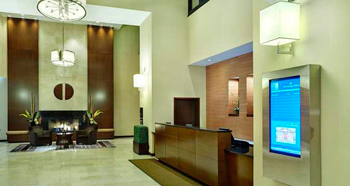
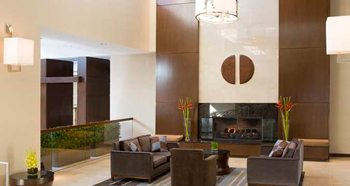
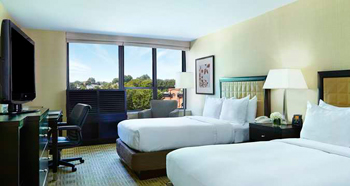
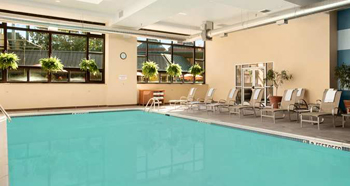
Conference Room Rate:
$175/night
Address:
Saratoga Hilton
534 Broadway
Saratoga Springs, NY 12866
Phone:
(518) 584-4000
Directions

